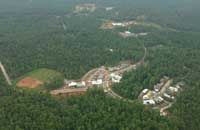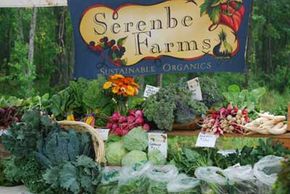Characteristics of Sustainable Living Communities
Sustainable communities generally strive to minimize waste, reduce consumption and preserve open space. Ideally, they don't use resources faster than they can be replenished, and they don't produce waste faster than it can be assimilated back into the environment. Granted, some communities are more radical than others -- living entirely off the grid and eschewing the use of government-printed money -- but the basic principles are similar.
Designing the neighborhood to encourage walking or bicycling is one way sustainable communities put these first two principles into practice. Less driving means less gas and reduced emissions. Many ecovillages also incorporate work space into homes or encourage telecommuting. They also might zone part of the development for commercial use, essentially making the community a self-contained environment where residents don't even have to leave for shopping or entertainment. This design sometimes is called a live-work-play lifestyle.
Advertisement
Using green building techniques is another staple of sustainable communities. Here are a few examples:
- Architects design buildings to take advantage of the sun's lighting and heating capabilities.
- They install energy-efficient appliances.
- They try to use local sources of materials as much as possible to cut back on the environmental costs of transport.
- They build with durable, non-toxic materials that have either been recycled or sustainably harvested.
You might see straw bale houses, which essentially use bales of straw as the structural building blocks; cob houses, which are a mix of straw, clay and sand or earthbag homes, which are exactly what they sound like, homes made out of bags of dirt.
Along with green building techniques, sustainable communities rely on green gardening methods. They landscape with native, drought-tolerant plants and raise them organically to reduce water and keep pesticides and herbicides out of the environment. Some settlements, like Serenbe, also maintain sizable organic vegetable gardens to provide a local food source.

Many communities also set aside a significant portion of their land as open space. Serenbe, for example, reserves 80 percent of its 900 acres for green space; that is 720 acres of rolling hills, woods and streams free of development [source: Thuston]. Quite a contrast to the concrete-laden urban sprawl of Atlanta just 32 miles away.
Another way sustainable communities reduce their ecological footprint is by capturing and recycling their wastes, often creating their own contained natural cycles. Instead of treating normally perceived waste products such as rainwater and sewage as pollution to be gotten rid of, residents turn them into resources. Sewage, for example, is turned into compost that fertilizes plants and increases soil productivity, while captured rainwater is cleansed through innovative filtering systems and reused for watering plants. For more information on these techniques read How Composting Works and What is gray water, and can it solve the global water crisis?
On the next page, learn how 50 people in Missouri are practicing radical environmental sustainability.
